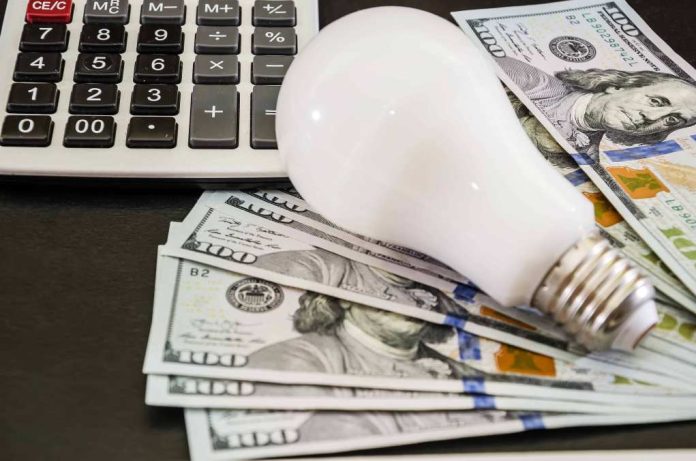
There are many ways you can save energy at home and increase your energy savings. You could save on your energy through simple adjustments in your home or by getting support from government programs. This article will tell you about different ways you can save money on your energy bills.
Tips to Save on Your Energy Bills
The way you can save on your energy bills will depend on your current situation. However, you can consider the following tips as a general guideline that may be able to help! This includes:
- Handling Home Adjustments
- Getting Help from Government Programs
Handling Home Adjustments
Small changes can lead to big results! That is why you should check out some changes you can make when dealing with your home that could lead to some savings. Some of the changes include:
- Adjust Your Daily Behavior
- Replace Your Light Bulbs
- Install a Programmable Thermostat
- Purchase and Use Energy-Efficient Appliances
- Install Energy-Efficient Windows
Adjust Your Daily Behavior
Saving energy can be as easy as unplugging appliances when you do not need them (which can lead to savings between $100 to $200 per year). This could include hanging clothes instead of using dryers (which can lead to savings of a little over $100 per year). Regardless, being more self-aware about the energy you are using is key! You also want to keep track of your usage. This can help you see how much you are saving each month with the changes you make (as well as outside factors).
Replace Your Light Bulbs
On average, a household can save roughly $225 per year in energy costs if the household is using LED lighting. That’s because some light bulbs are more energy efficient than others. The difference you will see from switching your light bulbs will depend on the current lightbulb that you use.
Install a Programmable Thermostat
Households that use a programmable thermostat can see savings of roughly $180 every year. These thermostats will automatically regulate the cooling and heating of the home. This means that when you are out of the house or sleeping, the thermostat is making sure the temperature is staying at the level it needs to be.
Purchase and Use Energy-Efficient Appliances
Depending on the type of energy-efficient appliance you get, you could see savings of between 10% to 50% of your energy bills. You can consider switching your normal appliances to energy-efficient ones. Some appliances you can switch are:
- Washer
- Dryer
- Dishwasher
- Refrigerator
- Oven/Stove Top
Install Energy-Efficient Windows
Depending on the type of window you currently have, you could save up to $583 per year by getting energy-efficient windows. For example, those who currently have single-pane windows, and switches, could save between $101–$583 every year. However, those who currently have double-pane, clear glass windows, and switches, could save between $27–$197 every year.
Getting Help from Government Programs
Besides making lifestyle adjustments, you may find that there are government programs that can help you save even more! A couple of popular programs that help with energy bills include:
Low Income Home Energy Assistance Program (LIHEAP)
This program aims to help those in need. The United States Department of Health and Human Services (HHS) is the managing agency for LIHEAP. However, there will be state and local LIHEAP offices that administer and manage the program with recipients. Some of the support that this program can help with include:
- Heating and cooling costs
- Assistance with handling bills
- Energy crisis support
- Home repairs (as long as they are energy-related)
Even though this program generally doesn’t provide support on water bills or sewer bills, there can be exceptions. For example, the program may cover some water costs if the water is used for air conditioning. If you have an interest in applying for LIHEAP, it’s important to be mindful that the process will be different depending on the state. Regardless, you will want to reach out to your local LIHEAP office. They will be able to provide you with information and answer any questions you may have. If you are finding it difficult to get in touch with someone at your local LIHEAP office, you can reach out to your state’s LIHEAP office.
Weatherization Assistance Program (WAP)
Another popular program that can help people with energy bills is WAP. This program aims to support low-income households to reduce their energy bills. To do this, the program helps recipients improve the energy efficiency of their household (all while keeping safety and health in mind). By improving this efficiency, recipients can save $372 or more every year on average!
Besides the savings above, some other benefits of WAP include:
- Community revitalization
- Supporting job opportunities
- Helping households save on expenses besides energy bills, like out-of-pocket medical expenses
- Helping households lower the number of workdays that have been missed
If you are interested in applying for this program, you will want to submit an application to your state’s weatherization agency. Besides submitting an application, this agency will be able to answer questions, comments, concerns, etc., that you may have when it comes to this support opportunity.
Bottom Line
In conclusion, there are many things that you can do in your home to save energy. You might not believe it, but you can save a lot of money every year by lowering your energy consumption. There are things that you can do at home and there are programs that you can apply for to help you out. Some things you can do at home include:
- Adjust Your Daily Behavior
- Replace Your Light Bulbs
- Install a Programmable Thermostat
- Purchase and Use Energy-Efficient Appliances
- Install Energy-Efficient Windows
On the other hand, you will find that there are two main programs that can help with energy performance in a household. Those programs are the Low-Income Home Energy Assistance Program (LIHEAP) and the Weatherization Assistance Program (WAP). You never know what could happen after you apply. Who knows? You may be able to qualify for one of these support opportunities. You won’t know until you try!
















